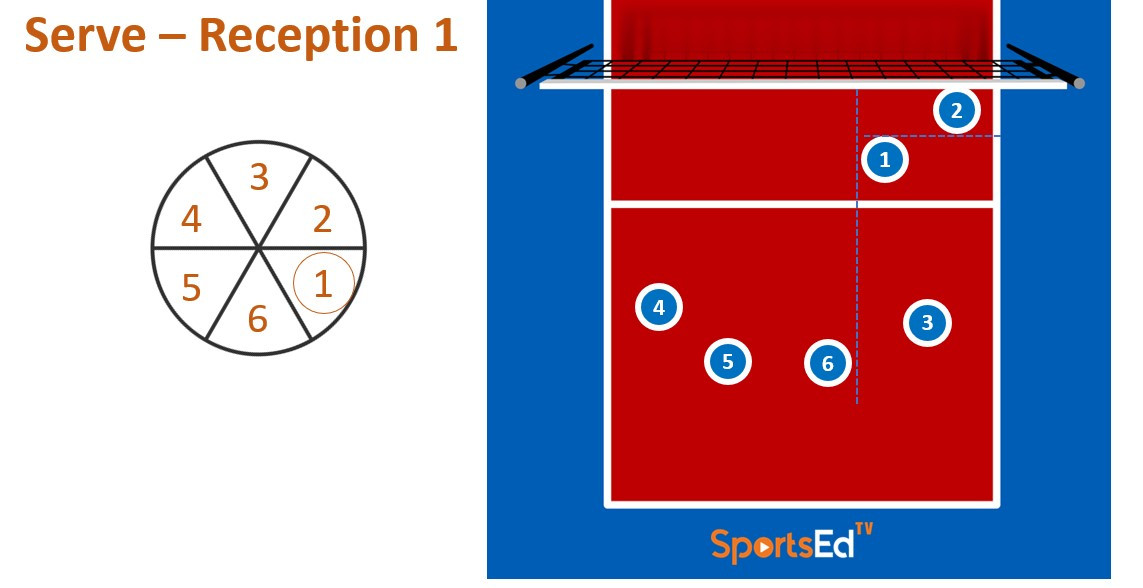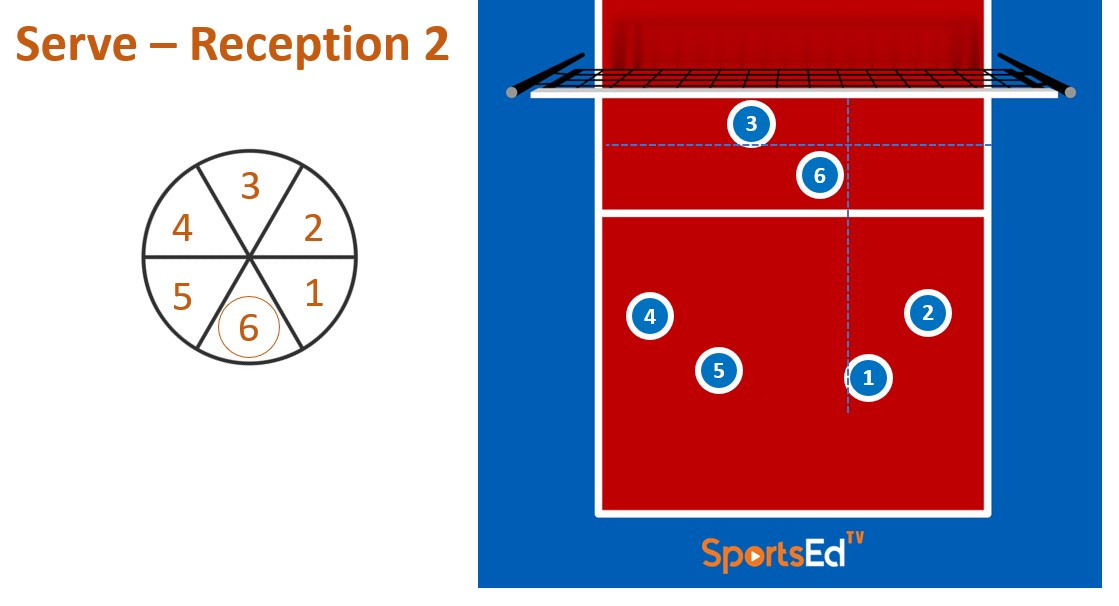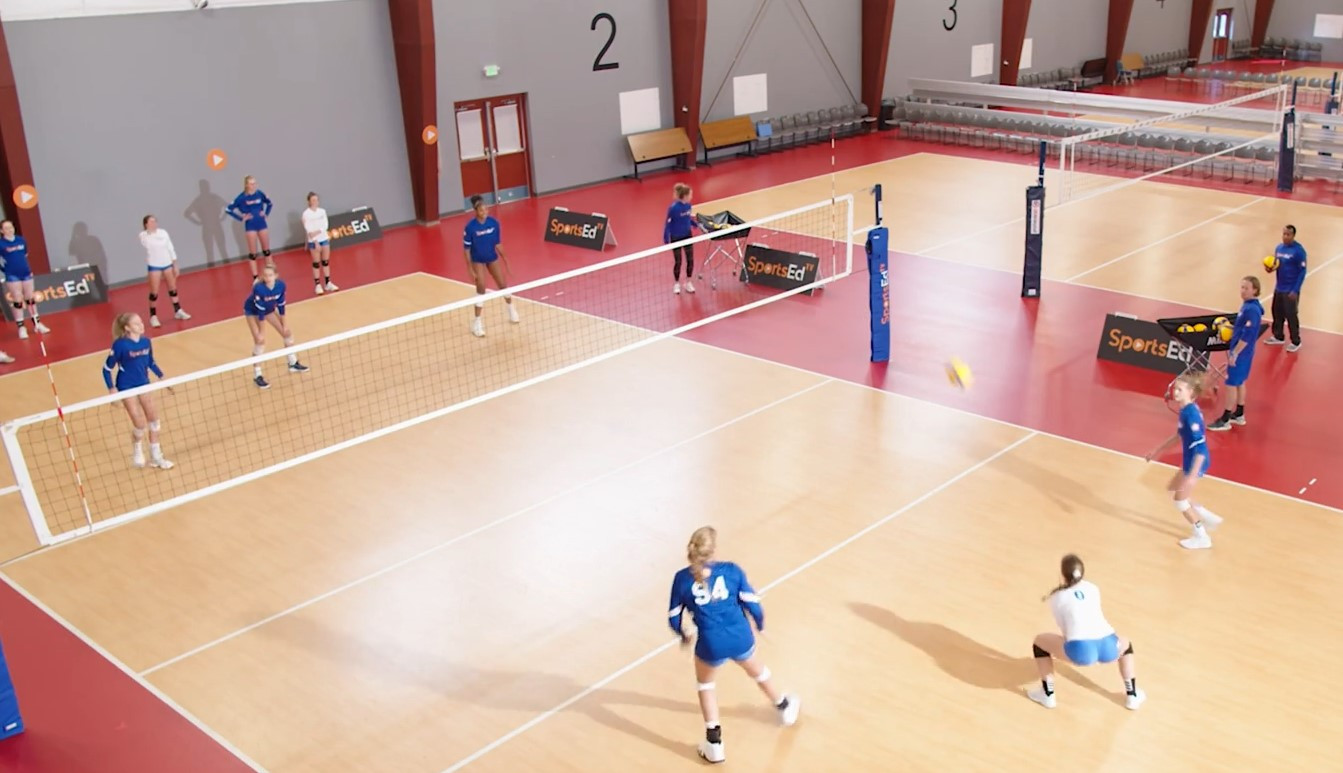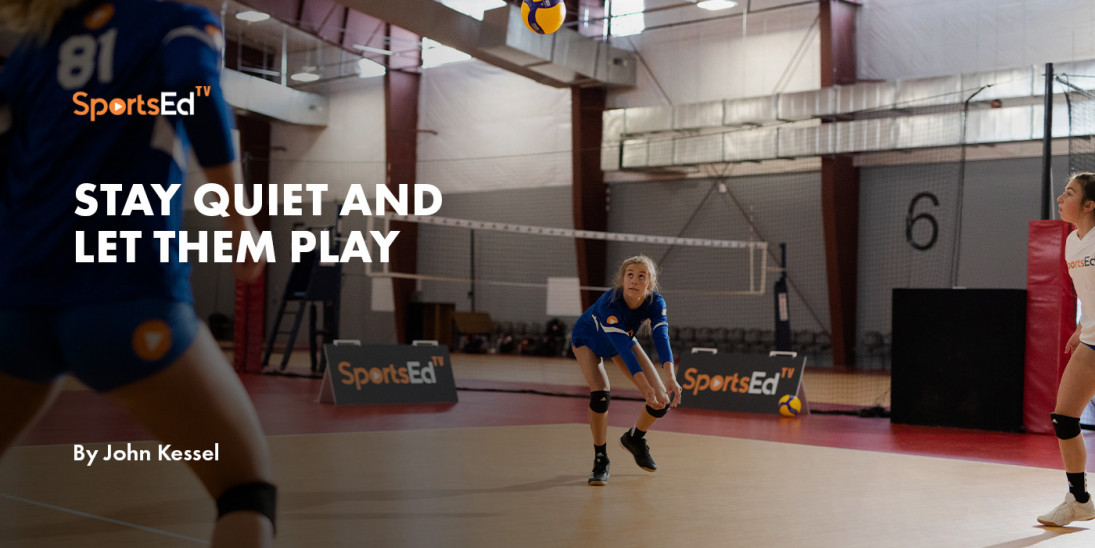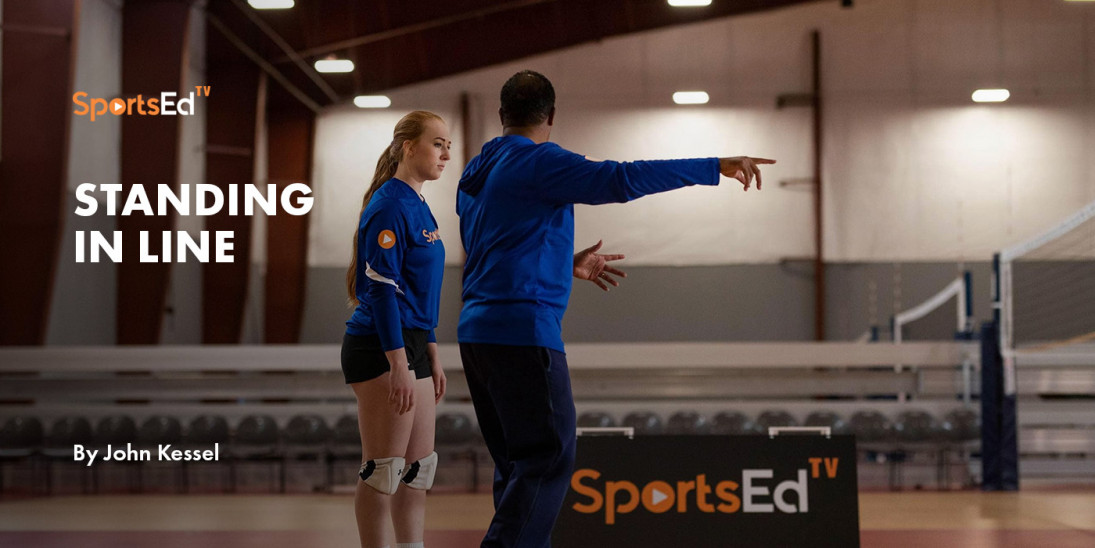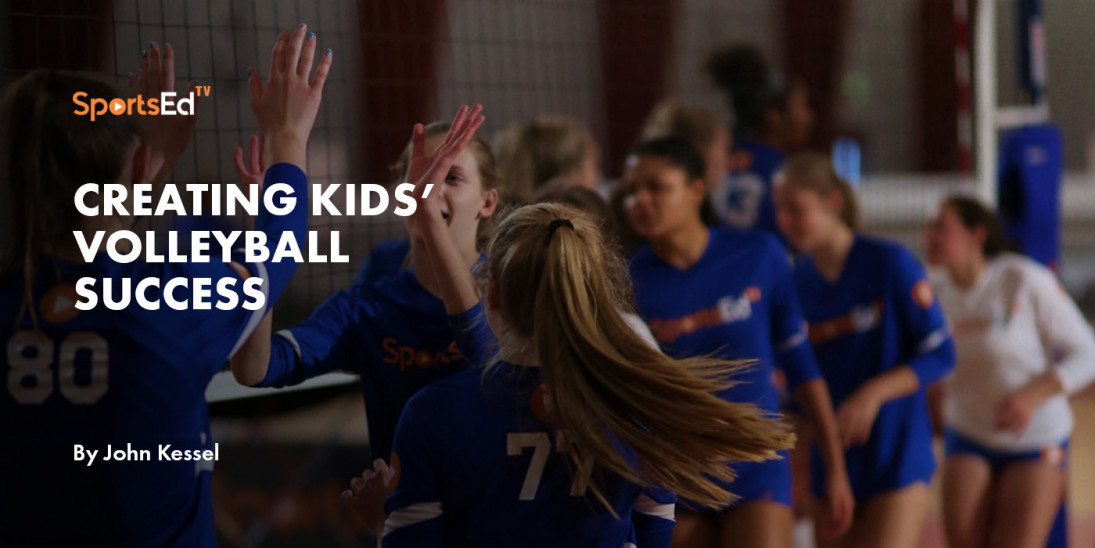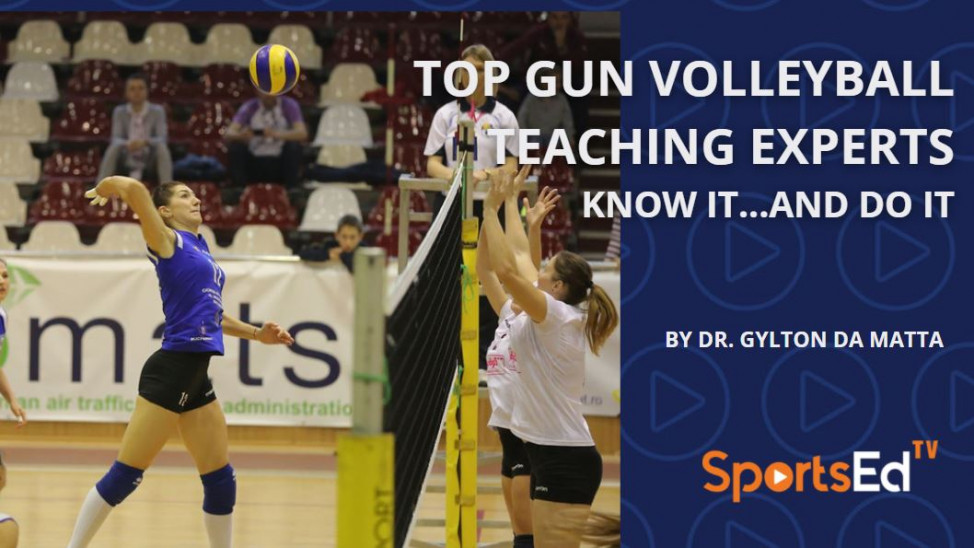Volleyball
Welcome and thanks for visiting...

Tactical Development in Volleyball

One critical aspect that volleyball coaches must consider is the long-term tactical development in volleyball. It is very common to see early specialization even at U12 volleyball teams, but many coaches overlook the fact that they can run a system like "4-2", "5-1", or "6-2/0" that young players can adopt as they progress in their careers in volleyball. The purpose of this blog is to present tactical alternatives for beginner coaches and/or for elite volleyball teachers who coach beginner athletes. Perhaps adopting a 4-2 or a 6-2 will be as efficient as running a 5-1. For instance, running a 4-2 can facilitate the technical development of your team and this also simplifies the process of switching and serving reception rotations.
What is a system of play in volleyball (6-2, 6-3, 5-1)?
A volleyball system of play refers to the overall tactical structure used by a team during a game. It involves the distribution of positions and responsibilities among players on the court, as well as the way they move and interact with each other on offense and defense. In volleyball, there are several different systems of play, each with its own strengths and weaknesses. The most common systems include the 6-2, 6-3, 5-1, and 4-2. The 6-2 system, for example, involves having six players on the court, with two of them designated as setters and rotating through the front row.
Instead of focusing on the result of winning by having only the best setter in matches, consider a more holistic approach. Developing all-around players is what top-level teams are looking for. It would be ideal to have more players performing in multiple positions thus being socialized into all aspects of the game. To achieve this, here are some fundamental principles that some nations mandate in their volleyball programs, such as 6-6 play until age 14 or older.
- Initial ability does not necessarily predict final ability.
- Motor skills are learned through doing, not just observing.
- Reading and learning are crucial skills in volleyball.
- The goal is to have players who are competent in all six skills and excel in one or two of them.
The American Development Model embraces these principles, with a focus on keeping as many kids involved in the sport for as long as possible. In Brazil, for example, all teams playing at the 14U level must have each player set one of the six rotations, creating a 6-6 system. Other nations may not implement 6v6 play until middle school or even later (Da Matta, 2004).
What system of play should you choose?
As a coach or player, the decision to adopt a 6-6 or 6-3 system or any other, should be based on the principles and examples presented. It ultimately depends on the type of players on your team. For example, if your team has three setters in tryouts, it makes sense to consider the 6-3 system. This will result in more setters in your program in the long run. I will provide additional information on serve-receive formations and the reasoning behind my recommendation at the end.
In my opinion, the decision should take into account the player's first year of exposure to the game versus their first year of playing 6v6. It is important to note that when observing young players in the Thai and Lions Cup Elementary competitions, it is essential to consider the amount of time they have spent playing 1v1, 2v2, 3v3, and 4v4 at a younger age. One of the most significant mistakes made in volleyball, particularly in the USA, is having first-year players and players in grades 2-5 play 6v6 right from the start. They are pushed to play "the real game" on full-sized courts designed for adults. Thus, it is recommended to use a developmentally appropriate approach where a young athlete can play as a child. Children are not adults in miniature (Martens, 1977).
At the elementary-age level, this must change to having smaller-sided teams on smaller courts and lowered nets. The volleyball literature also suggests modifying the rules and making sure young players are successful by learning skills that are commensurate with their developmental stages.
When reflecting on how you learned to ride a bike, you likely recall the trials and errors, but ultimately not being a failure. You did not have to participate in drills, nor did your parents hire a coach, nor were bike riding summer camps available. You learned to ride a bike through hands-on experience, and this type of learning is intrinsic. As a result, your skill has deep and long-lasting retention, and most importantly, you learned by riding your own bike. Imagine how long it would take to learn to ride a bike if you had 12 friends also learning, and just ONE bike. That is what is happening in too many practices and a solely 6v6 focus. Worse, it gets to one bike and 23 others waiting to learn to ride better when you get to a match/tourney.
Furthermore, when a kid is 12, not matured at all physically, you want him/her to have the chance to experience multiple sports options – we call it sports sampling. Specific to our sport, you want them to learn all six of the core skills in our sport and when they get older – about 14-15, begin to specialize. This is also why we want our players to get more reps at all ages by playing more doubles volleyball on any surface. In fact, this is the purpose of grassroots volleyball programs.
Remember this entertaining pastime for kids who love volleyball, where 3 to 6 students can quickly improve their skills by playing "Winners Stay On" (or "Loser Becomes the Net") with just a ball and a few friends during lunch or other free time. This variation is played 1-2 against 1-2 with no net.
In "Around the League in 80 Days", the author recounts his journey coaching seven high school senior boys who had never played volleyball before, including his own son who had played doubles since the age of 10. The team utilized a 6-3 system with the author's son setting two rotations, and they just missed the finals at the end of the season. It was a proud moment for the coach when parents informed him that their child had made varsity as a freshman after starting as a middle blocker and showcasing their ability to set an offense while playing front row.
Note that your younger teams may lose to programs that run a 5-1, where the program is already specializing, as your team will have three variations of setting versus just one. If you have read my blog/studied motor learning, the randomness of learning to hit off three teammates makes you a much better-skilled spiker in the long run, a gift I feel is important to give to younger players.
The thing is, I coach to develop amazing leaders, and a 6-3 allows me to develop those “quarterback” skills, as it were, in not just the three players running the offense but in one or two more in practice, so that about half my team is actually practicing running the system.
Below are the three versions of a 6-3 (which also apply to doing a 6-6 by following just the top half of the rotation charts). For a 4-2 version, the three setters run from positions 3 and 2. For the “5-1” version, they set twice from positions 2 and 1. Finally, in the 6-2/0 version they will be running your offense from positions 1 and 6.
The 6-2/0 pattern provides an opportunity for less switching and more straightforward serve reception. In this setup, the setter stays at the target spot throughout the entire rotation, eliminating the need for switching.
The setter target should be positioned slightly off the net to allow for more variation. The non-receiving players at the net can hit middle, and immediately go right side or outside on the first ball, the choice is yours as the coach. I prefer to limit the number of receivers to 3-4 as it reduces the number of decision lanes, eliminates the middle player's tendency to head duck, and aligns with the teams' familiarity with serve reception in smaller groups through 2 v 2 and 3 v 3 speedball and games.
Unlike the 4-2 that many programs implement, the athletes in this 6-3 system know exactly where their setter target is, as the setter is off the net, standing at that exact spot. Plus, they only have to learn two patterns, repeated three times. The only overlap concern you need to teach is when the setter is in the middle back position 6 – the right back position 1 needs to stay to the setter’s right until serve contact is made.
When playing 6v6 games for youth, it's advisable to give strong consideration to these 6-3 and 6-6 offenses. This will help cultivate better players in your pipeline for the future.
Nobody knows if a 10-14-year-old will be a great setter unless given the chance. We need to stop picking setters based on height, i.e., being vertically challenged. We also need to understand that you will be a better hitter if you set and a better setter if you hit. Let them learn all six skills when young [and let them specialize their positions after maturation is completed].
I hope I never hear again, “I am too short to hit.” Just set the shorter kids off the net more and let them spike. These two systems better enable the role reversal needed at the younger levels.
These General Dispositions outline the 3-3 system, 4-2 system, and 6-2 or 6-0 systems, along with two suggestions for four-player serve-reception. There are numerous tactical options available, so ensure that your team can take advantage of one of them.

